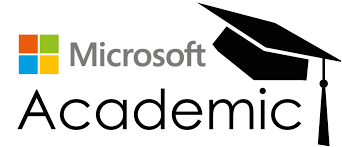MENINGKATKAN RELEVANSI PEMBELAJARAN KIMIA MELALUI PEMBELAJARAN BERBASIS KEARIFAN DAN KEUNGGULAN LOKAL (Suatu Studi Etnopedagogi melalui Indigenous Materials Chemistry)
Abstract
ABSTRAK
Penelitian ini bertujuan untuk menghasilkan model pembelajaran, bahan ajar, dan alat ukur penilaian literasi sains pada pembelajaran kimia berbasis kearifan dan keunggulan lokal. Kearifan dan keunggulan lokal yang dimaksud adalah yang berkaitan dengan kimia material pribumi (indigenous materials chemistry). Untuk menghasilkan model pembelajaran, bahan ajar, dan alat ukur penilaian literasi sains, tahapan pertama yang dilakukan adalah menganalisis potensi kearifan dan keunggulan lokal yang terkait erat dengan konsep-konsep ilmu kimia dalam standar isi mata pelajaran kimia SMA melalui studi pustaka dan studi lapangan. Hasil analisis tersebut adalah untuk daerah Kabupaten Majalengka dan Bandung Barat potensi daerah berupa bahan baku keramik dapat digunakan untuk menjelaskan kimia unsur, untuk daerah Garut potensi daerah berupa batik dapat digunakan untuk menjelaskan materi polimer dan lipid, untuk daerah Indramayu potensi daerah berupa pengeboran minyak dapat digunakan untuk menjelaskan materi ikatan kimia dalam konteks grafena, untuk daerah Cirebon potensi daerah berupa budaya ruwatan keris dapat digunakan untuk menjelaskan materi reaksi elektrokimia dan korosi. Produk dari penelitian ini berupa: (1) model pembelajaran yang digambarkan dalam peta konsekuensi, (2) bahan ajar yang mewujudkan tahap pembelajaran STL, yaitu tahap kontak, tahap kuriositi, tahap elaborasi, tahap pengambilan keputusan, tahap nexus dan tahap penilaian, dan (3) alat ukur penilaian meliputi aspek konteks, konten, proses sains, dan sikap sains.
ABSTRACT
This study aims to produce the models of teaching, teaching materials, and assessment for science literacy measurement tools on local wisdom and excellent-based chemistry teaching. Local wisdom and excellence mentioned is related to indigenous materials chemistry. The first stage of this study is to analyze the potential of local wisdom and excellence are related to chemistry concepts in the high school chemistry content standard through library research and field studies. The results of this analysis are (1) ceramic materials which are the potential of West Bandung and Majalengka areas can be used to explain the chemicalelements, (2) raw materials of batik which are potential of Garut area can be used to explain the polymer and lipid material, (3) Graphene that use raw materials from oil drilling which are potential of Indramayu area can be used to explain the chemical bonding material, and (4) “keris” cultural maintenance which are potential of Cirebon area can be used to explain the electrochemical reactions and corrosion materials. The product of this research include: (1) models of teaching are described in the consequences map, (2) teaching materials that embody the learning phase of the STL, the contact phase, curriosity phase, elaboration phase, the decision-making phase, nexus phase and assessment phase, and (3) assessment measuring tools include aspects of the context, content, process science, and science attitudes.
Keywords
Full Text:
PDFReferences
Alwasilah, C., Karim S., Tri K. (2009). Etnopedagogi: Landasan Praktik Pendidikan Guru. Bandung: PT Kiblat Buku Utama.
Brady, James E. (2005). Kimia Universitas Asas dan Struktur Edisi ke 5 Jilid 2 (Penterjemah : Maun, S et.al dari: General Chemistry). Jakarta: Binarupa Aksara Publisher.
Brown, T.L. (2009). Chemistry: The Central Science. USA: Pearson Education
Chang, R. (2004). Kimia dasar: Konsepkonsep Inti Edisi Ketiga Jilid 2 (Penterjemah: Achmadi, S. S dari: General Chemistry : The Essensial Concept). Jakarta: Erlangga.
Depdiknas. (2008). Konsep Dasar Pendidikan Berbasis Keunggulan dan Kearifan Lokal. Dirjen Pendidikan Dasar dan Menengah Direktorat Pendidikan Menengah Umum.
Firman, H. (2007). Laporan Hasil Analisis Literasi Sains berdasarkan hasil PISA Nasional tahun 2006. Puspendik.
Harsrinuksmo, B.(2003). Ensiklopedia Keris. Jakarta: Gramedia.
Holbrook, J. (1998). “A Resource Book for Teachers of Science Subjects”. UNESCO.
Holbrook, J. (2005). ”Making Chemistry Teaching Relevant”. Chemical Education International.6(1), 1-12.Holbrook, J. (2005). ”Making Chemistry Teaching Relevant”. Chemical Education International.6(1), 1-12.
Irwin, D. , Ross, F, dan Patrick, G.(2007). Chemistry Contexts. Australia : Pearson Education Australia
Jong, OD. (2006). Context- Based Chemical Education: How to Improve it?. Sweden: Karlstad University.
Nentwig, P., Parchmann, I., Demuth, R., Grasel, C., Ralle B. (2002). “Chemie im Context-From situated learning in relevant contexts to a systematic development of basic chemical concepts”.Makalah Simposium Internasional IPNUYSEG Oktober 2002, Kiel Jerman.
OECD (2009). PISA 2009 Assessment Framework Key competencies in reading, mathematics and science.[online].Tersedia:http:www.oecd.org/dataoecd/11/40/44455820.pdf [10 September 2010]
OECD (2010), PISA 2009 Results: What Students Know and Can Do – Student Performance in Reading, Mathematics and Science (Volume I) [online]. Tersedia: http://dx.doi.org/10.1787/9789264091450-en [ 20 Mei 2011]
DOI: https://doi.org/10.18269/jpmipa.v17i1.36057
Refbacks
- There are currently no refbacks.
Copyright (c) 2021 Jurnal Pengajaran MIPA

This work is licensed under a Creative Commons Attribution-ShareAlike 4.0 International License.
JPMIPA http://ejournal.upi.edu/index.php/jpmipa/index is licensed under a Creative Commons Attribution-ShareAlike 4.0 International License
Jurnal Pengajaran Matematika dan Ilmu Pengetahuan Alam (JPMIPA) or Journal of Mathematics and Science Teaching
All rights reserverd. pISSN 1412-0917 eISSN 2443-3616
Copyright © Faculty of Mathematics and Science Education (FPMIPA) Universitas Pendidikan Indonesia (UPI)
View JPMIPA Stats









